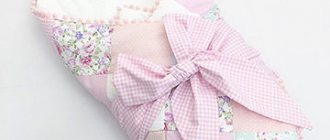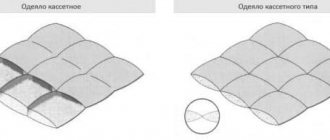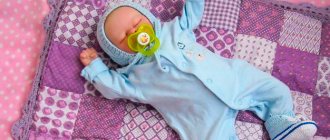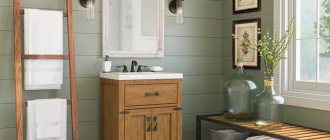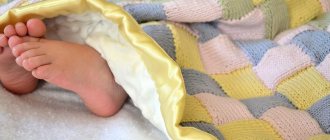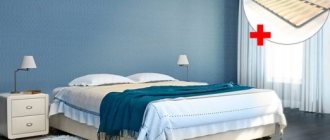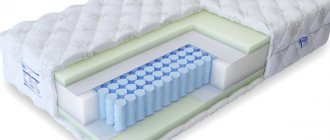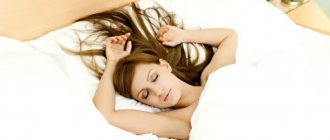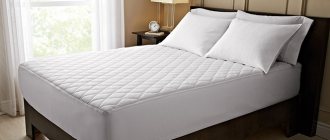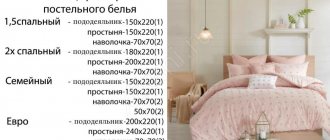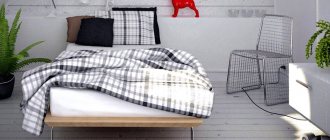Properly selected sleeping textiles are the key to a complete, comfortable rest. For a cozy, truly healthy sleep, you need a comfortable bed, a mattress (preferably orthopedic), a pillow, a blanket with hypoallergenic filling, and bed linen made of natural fabric. What sizes of double duvet are there? Russian and foreign standards, selection criteria, types of fillers - everything about blankets in this article.
Sizes of a double blanket and GOST standards of different factories and countries
A large selection of sizes, a wide range of models with various fillings, and attractive textiles sometimes make choosing a blanket difficult. When purchasing, pay attention to the size of the product, taking into account the number of people who will rest under it. The blanket must correspond to the dimensions of the bed and meet seasonal conditions.
Russian manufacturers of textile products are guided by generally accepted GOST standards for finished bed blankets, which specify the dimensions of finished products, measurement principles, and labeling. The sizes of a double, one-and-a-half, or single blanket may deviate from the standard, but no more than 3%.
The sleeping standard for a double blanket in Russia is fixed in three main parameters (in centimeters) - 200x220, 195x215, 172x205. A one-and-a-half-length blanket is suitable for resting two people of slender build; one adult of average build can fit under it. The standard length and width of a semi-truck in cm is 150x215, 160x205.
In European countries, the dimensions of a one-and-a-half blanket are popular: 160-180x200-220. Double (King size) 215-240x235-260.
Blanket Size Chart
Comparative table of standard sizes and dimensions of the blanket:
| Name (dimension) | Width and length in cm |
| Single | 140 by 205 |
| Family lorry | 150-155 to 200-210 |
| Double | 172-175 to 205-210-220 |
| Euro standard | 200-220 to 220-240 |
| Children's | 100-110 to 120-140 |
The table shows that the size of a double blanket has a gradation in width and length.
Double and Euro
The sizes of blankets depend on the country of manufacture, internal state standards, needs taking into account a person’s physique and height.
In Asian countries, the main population is short and has a thin or average build; accordingly, the sizes of bed textiles differ significantly from Russian and European standards.
The euro size blanket is designed for wide, roomy beds, spacious and comfortable rest. Euro blankets are popular in hotels and hotels.
Family
The sizes of blankets for the family are single and double options. The standard semi-truck is 150-155 cm in width, 200-220 in length. Bedspread for two 172-175 mm in width, 210-220 in length.
Euro maxi
The largest Euro size is the King size option. Euro blanket sizes start at 200 cm in width and 220 cm in length. In European countries and the USA, blanket sizes may exceed generally accepted standards by 10-20 cm.
Non-standard sizes
Recently, the Russian textile industry has begun to move away from the generally accepted standard sizes of bedspreads, blankets, and bed linen. When choosing a blanket for yourself, you need to consider the size format of the duvet covers produced. Considering that non-standard sizes differ from regular ones. Width and length 215 by 175 cm. One-and-a-half (family) - 215 by 143 cm. Euro - 220 by 200 cm.
Review of manufacturers
Each manufacturer independently determines the size of its blankets, while trying not to deviate too far from generally accepted standards. When choosing a bedspread, you need to take into account the dimensions of the product, the quality of tailoring, the price, and pay attention to the factory brand. Manufacturers are divided into producing luxury and leisure items at affordable prices. Luxury blankets are produced by:
- Togas is a Russian company. It has several of its own factories, a network of warehouses, exclusive studios, and shops. The models are distinguished by innovation in tailoring, the use of unusual materials for the cover and filling;
- Kariguz mainly produces blankets with down and feather base as filling. The products are of high quality tailoring and are packaged in stylish brand bags.
It’s useful to know, read: – Euro bedspread sizes – features, advantages and disadvantages.
Manufacturers of home textiles at affordable prices:
- "Lezheboka" - the company produces blankets and pillows. Products are hypoallergenic, made of natural fabric, lightweight;
- "Ecotex" - the manufacturer has its own exclusive style, offers high quality products, a variety of models;
- Primavelle is an excellent combination of quality, safety, a harmonious mixture of natural fiber and synthetics.
There are plenty of them, and I'm alone
How to decide and what is best? How not to get confused and make the right purchase? To make it easier to figure out what’s right for you, let’s find out what subcategories and characteristics there are. The table below will help with this:
| Child (cm) | 110*140 or 140*140 |
| One and a half (cm) | 140*205 or 155*215 |
| Double (cm) | 175*205 |
| Euro double (cm) | 200*220 |
Let's carefully study the points in the table:
- Children's: 110*140 cm or 140*140 cm. For newborns it is square and differs in length;
- One and a half: 140*205 cm or in the European template 155*215 cm. You can also find other manufacturing variations, 160*205 or 160*220 cm.
The name one and a half does not mean one and a half men, as it seems at first glance, but determines the width of the product. Otherwise, it may be called “family” to simplify the purchase of kits. I bought family bedding for a blanket and am happy. As a rule, the set consists of a sheet, two duvet covers and pillowcases.
- Double: standard 175*205mm. There are also 180*210, 195*215 and 200*200 mm;
- Double euro: 200*220 mm. There is also a royal 220*240 mm. Buy it if your bed is more than 180 cm wide.
Blankets are also classified by weight:
- light - in everyday life it is called “summer”. Excellent air permeability and an ideal option for hot weather and “hot” people;
- semi-light or lightweight, if the apartment or house has heating, then opt for it;
- standard - medium density and average thermal characteristics. Many are accustomed to just this kind of performance;
- warm - ideal for winter and cold autumn;
- super warm - for those who prefer higher temperatures.
The best solution is to purchase two. Thin for the summer and warm or extremely warm for the winter. It all depends on your wishes and financial capabilities. There are also combined ones, more often they are called off-season.
From different manufacturers, the standard may vary up or down, but it would be better to choose the closest option, for example, one and a half sizes. You will save yourself from searching for a suitable bedding set. Of course, the assortment in stores is huge, but you don’t need to limit yourself and try to simplify your task.
This is interesting: Children's orthopedic pillow for newborns: how to use correctly, forms
What do we pay attention to when choosing a blanket size?
If you decide to purchase a blanket, then some dimensional parameters are significant and cannot be discounted, so some need to be measured in advance before coming to the store:
- the size of the blanket depends on the person’s weight, height, and build;
- the number of people who will rest under it;
- dimensions of the bed, other sleeping place;
- the product should have a small margin relative to the bed of 15-20 cm.
Also consider:
- seasonality. The type of filler and its thickness depend on the time of year. For summer, choose thin, lightweight products made from natural synthetic fiber. For winter, a blanket with a lot of wool and down;
- type of filler. The volume and weight of the product depend on it;
- The material of the cover is dense, soft, and does not cause allergic reactions;
- sewing technology. Quilted or cassette model.
Euro blanket sizes are designed for a spacious long bed. When choosing, consider its dimensions.
Choosing clothes
Bed linen is no less important. The fabric will be in constant contact with the body and should be pleasant and hypoallergenic. Be easy to care for and wash. It’s better if it practically doesn’t wrinkle; such a bed looks neater and more well-groomed.
The duvet cover parameter is: blanket plus 5-6 cm on each side. Then you can easily tuck it in and it won’t twist or fold to the side. If minimal doubts creep in, then take a reserve of 7-8 cm. Please note that low-quality underwear will shrink and become a little smaller.
We select the right bed linen for the size of the blanket
Each set of bed linen has its own sizes depending on the standards of the beds. To correctly select bed textiles, measure the width, length, height of the mattress and pillows.
For the sheet, add 10-15 cm on each side so that it can be tucked under the mattress. Choose a duvet cover based on the size of the blankets. Measure the width and length of the blanket and add 5 cm on each side to freely place the product in the duvet cover. Cushion covers should be 1cm larger on each side.
Standard sets of bed textiles are single, one-and-a-half, double, euro. All information is indicated on the tag, the length and width dimensions of each item in the set are indicated.
What standards are there?
Each country has its own standard sizes of blankets, focused on specific parameters of furniture or mattresses. Therefore, it is incorrect to assume that there is a single standard.
For example, in Russia a double blanket has the most common size - 172x205. Such parameters gained popularity in the Soviet Union and England. In Germany: 180 x 220, 200 x 220; in Spain 210×250, 200×210, etc.
There are less common models, for example, 200x200. The square blanket is hard to find, as is the bedding underneath. But they are easy to use: to change the duvet cover, you don’t need to look at which direction is “along” and which is “across”.
The width of a large double blanket can vary from 175 to 220 cm, length from 200 to 240 cm.
Besides size, there are other factors to consider:
- how much does it weigh;
- materials;
- filling.
The dependence of the weight of the blanket on the type of filler
The weight of the blanket is influenced by several factors - the raw material class of the filler, its density, seasonal purpose. The heaviest ones include natural down, camel wool, cotton, linen, and cotton wool. The high density of the raw material makes the blanket heavier.
The lightest natural fillers are bamboo and sheep fleece. Bedspreads for winter have a higher density, approximately 400-420 g. per m2. Autumn-summer options are lighter, 250-300 gr. per m2. The lightest bedspreads for summer. Cool summer has a density of 150-200 g. per m2. Synthetic fiber fillings have medium to low density.
Classification of blankets by degree of warmth
The degree of warmth of the bedspread depends on its intended purpose.
1. Down and wool are especially warm for harsh winters. Density over 420 g. per m2. Able to warm you up in the bitterest frosts.
2. Warm for a normal winter with average European temperatures down to minus 10-15 degrees. Average density 350-370 g. per m2.
3. Demi-season, off-season standard (300-320 g per m2). For slightly cooler weather.
4. A lightweight version of the blanket is well suited for cool spring and warm autumn. Has a density of 200-250 g. per m2.
5. Summer models have the thinnest and lightest bedspreads. Density 150-200 gr. per m2. Suitable for cool rainy summer weather. They allow maximum air permeability and ensure full “breathing” of the skin.
The heat level is indicated on the product label in the form of dots from one to five. The more dots, the warmer the product.
Care and storage
Products with natural or artificial filling require certain care and storage.
1. Down products must be dry cleaned due to the risk of gluing and clumping of the raw materials when washed in water. Down is sensitive to high humidity. Store in a dry, well-ventilated place.
2. Sheep or camel wool bedspreads can be dry cleaned or hand washed in warm water. Do not twist or squeeze. Before drying, carefully straighten the product to avoid any jams or creases. Store in a cloth bag, avoid plastic packaging.
3. The flannelette cotton bedspread can be machine washed on a delicate cycle. Can be ironed and steamed. Store rolled up to avoid creases and wrinkles.
4. Cotton requires constant ventilation and drying. The standard sizes of a cotton wool blanket do not allow for cleaning at home. It is better to wash, iron, and remove stains in dry cleaning.
5. Artificial materials (sintepon, holofiber, Thinsulate) tolerate washing well in an automatic machine. When cleansing, use gel-like or liquid products. Dry flat, turn over periodically, do not iron. Artificial fiber does not require special care or storage. When folded, it does not wrinkle into folds or creases. Keeps its shape well.
Bedspreads must be ventilated periodically. If stains appear, clean the item with a powder or gel stain remover. Use natural remedies - table salt, soap for household needs. Store in a roll form in a cloth wrapper in a separate drawer or cabinet shelf.
Materials
Almost all characteristics of the product depend on the material used for manufacturing - comfort, thermal conductivity, hypoallergenicity, ease or difficulty of care, and much more. The fabric from which the product is made is selected taking into account the individual preferences of the future owner.
Blankets are made from such fillings as:
- Wool;
- Cotton;
- Cotton wool;
- Pooh;
- Bamboo;
- Silk;
- Synthetic materials.
Natural
Blankets made of wool are considered the warmest; as a rule, sheep or camel fur is used to make them. Depending on the thickness, they can be either winter or demi-season. Products made from merino (specially processed sheep wool) are becoming especially popular. They provide their owners with a sleeping place with high-quality thermoregulation and air ventilation.
Cotton is rightfully considered one of the most hypoallergenic materials of plant origin. But its disadvantage is that it does not retain heat well; it is better to use cotton blankets in the summer.
Blankets made of cotton wool in general are the same as cotton products, but due to the characteristics of the material they are very difficult to care for and quickly lose their advantages compared to other blankets. In addition, products made from cotton wool are notable for their considerable weight.
Duvets contain feathers or down of waterfowl such as ducks, loons and geese; these products are considered the warmest, softest and most breathable, and also have affordable prices.
Bamboo products have many advantages, the main ones being environmental friendliness, lack of allergic reactions and high hygroscopicity. They retain heat well and are suitable for use at any time of the year.
Silk products are predominantly summer models; the natural material has a high level of wear resistance and a long service life. Silk blankets have one drawback - their high price.
Perhaps the “Achilles heel” of natural fillers of any type is a favorable environment for the development of parasites and various harmful bacteria. That is why experts recommend purchasing natural products with special impregnation that protects the filler from the formation of a pathogenic environment.
Synthetic
Blankets made from synthetic materials have characteristics no worse than products made from natural fillings. Synthetics are distinguished by high quality, ease of care and affordable prices.
The most familiar and most common synthetic filler to consumers is synthetic padding polyester. Synthetic winterizer products are lightweight, durable and do not cause allergic reactions; such products can be washed without fear of deformation or pilling of the filler.
Holofiber takes pride of place among synthetic fillers. This type of material is reliable, light weight and has good thermal conductivity. In addition, holofiber blankets can be safely machine washed at home.
A high-quality prototype of natural down is Thinsulate; this material is very similar in characteristics to feathers, but the main difference and advantage is absolute protection from parasites, and as a result, hypoallergenicity.
The next no less popular analogue of natural material is lyocell. This prototype of cotton fillers is quite easy to use and maintain, is relatively inexpensive and has a high level of heat regulation.
Reviews
Olga, 47 years old
A few months ago I bought a one and a half blanket for my teenage son. Before purchasing, I carefully studied the sizes of a one-and-a-half-size blanket in order to choose the right one and purchase something to grow into. The son is large and tall. The 150x220 cm blanket fit perfectly. Filler bamboo fiber, cover made of cotton fabric. Beautifully quilted, all lines are even. I'm happy with the purchase.
Tatyana 56 years old
I decided to replace the old 2-bed blanket with a new one. I love space and freedom when relaxing. Therefore, I paid attention to the Euro standard option. I chose the size 200x220 cm. Winter insulated version made of sheep wool. I really liked the case made of natural satin, soft and smooth. The item is made using the cassette method. The filler does not clump and is located in a separate cell. A very convenient, practical, nice thing.
Natalya, 20 years old
I recently purchased a single flannelette blanket. Width 140 cm, length 200 cm. The product is soft, light and warm. Made from natural cotton, does not cause allergies. Yellow sunny color evokes positive emotions.
Color
It is worth paying attention to the shade of the material: the influence of color on a person is a proven fact. The duvet cover can be with or without a pattern, but the main thing is that it should not evoke negative emotions, so it is better to exclude too saturated colors (red, black, dark blue). The bedroom is a special room, so the atmosphere should be inviting. This can be achieved with the help of soft, muted tones of pastel colors (lilac, pink, mint, heavenly, sunny, coral, golden, turquoise shades).
The color is chosen at will: some buyers do not attach any importance to it, because during the day the duvet cover is covered with a beautiful bedspread. Other users prefer that the bed linen completely matches the overall design idea, so they buy not only a duvet cover, but also pillowcases in a single set. Much attention is paid to the drawing.
To find out which blanket is better to choose, watch the following video.
